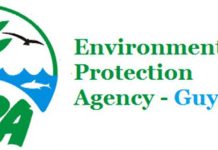Thank you for joining us again this week. As discussed in last week’s article, almost every home contains hazardous products. They are used in cleaning, home improvement projects, automobile maintenance, lawn and garden care, and a variety of other tasks. However, behind all the usage of these products come a number of health and environment problems.
In order to avoid potential risks associated with household hazardous wastes, it is important for us to always know how to properly manage, store, and dispose of these products. Here are some quick tips for managing household hazardous material/wastes:
•Read labels carefully before buying products. Avoid buying products with labels containing such words as: caustic, corrosive, danger, explosive, flammable, poison, toxic, volatile, or warning.
•Follow label directions on how to use a product, and use the recommended amounts. More is not necessarily better, and may be hazardous to your health.
•Use safer products whenever possible. Safer alternative products can be found in stores. Recipes for making your own can be found in books available through most libraries, or online.
•Buy household hazardous products only in amounts you need for the job at hand.
•Safely store the remaining unusable products in their original containers until a household hazardous waste collection is held in your area.
•Avoid coming into contact with hazardous products if you are pregnant.
•Recycle what can be recycled in your area (waste motor oil, transmission fluid, antifreeze, automotive batteries, button batteries, etc.) Contact local solid waste officials for locations in your area.
•Keep products in their original containers, with readable labels.
•Use safety equipment such as protective eyewear or face shield, mask and/or gloves when the label recommends avoiding contact with the skin or eye, or inhalation of vapours.
•Use up products entirely. It is not hazardous waste until it is no longer wanted or usable; and
•Share what you cannot use with a friend, neighbour, local business, or organisation.
Here are some quick tips you should follow for storing household hazardous material/waste safely:
• Close lids tightly, so that products will not dry out, evaporate, or leak.
• Store hazardous products in a locked cabinet away from children and animals.
• Store in a cool, dry area.
• Store away from sources of heat, spark, or flame.
• Store in original containers with labels intact.
• If the product container is deteriorating, place the entire container in a plastic bucket or glass jar with a tight-fitting lid. Surround it with a non-flammable absorbent, such as kitty litter, vermiculite, or floor dry, to absorb spills.
• Separate flammables, corrosives, and poisons, and store them on separate shelves.
Some quick tips for disposing household hazardous material/waste safely include:









